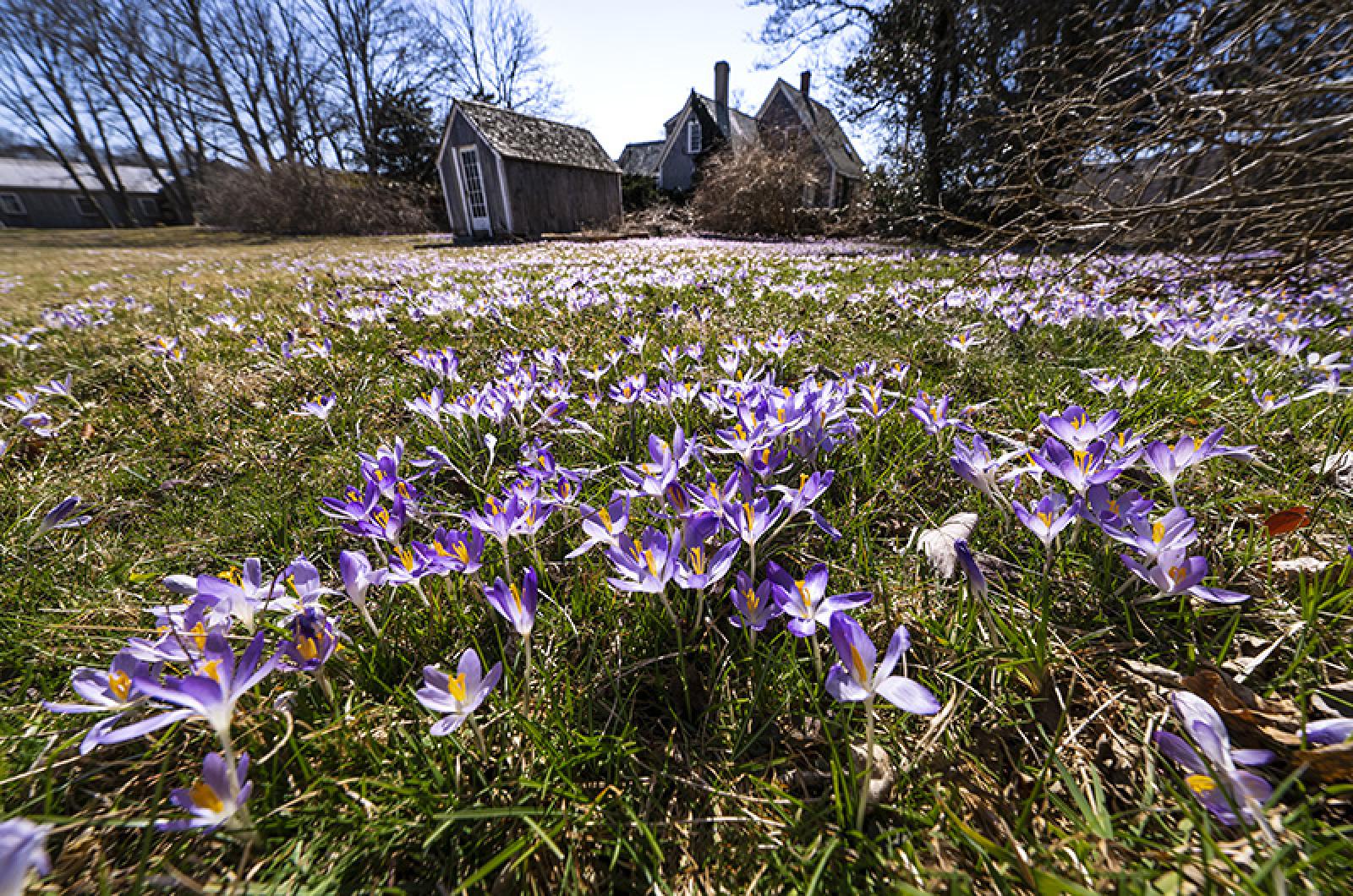After the cold and kind of miserable weekend, the week has turned the inevitable corner into spring. My species crocus were awash with honeybees on Tuesday afternoon. There were so many I could actually hear them.
I can no longer whine about the lack of garden news.
Violet was home from college this week so I promptly put her and her mother to work. They did a rough turn over of the very prolific winter rye. In my perfect world I would cover it with hay and plant right into it. Since I do not live in that world, I’m contending with an over-population of voles. Also known commonly as field mice, they are short-tailed, fat rodents who prefer living under mulch, weed mat, or carpeting in garden paths. I have an area under weed mat that seems like walking on marshmallows. Last year they ate every one of my beets. They love all root vegetables and the roots of ornamental grass. It’s downright demoralizing to even begin addressing the problem. My elderly barn cat kept them in check before he moved on to meet his maker.
Oddly, they did not discover the row of wintered-over carrots that are sweet and delicious. I neglected to cover them with hay in the fall, which may have saved their little lives for me.
The greenhouse is full to bursting. I started some asparagus from seed. It came up as tiny, adorable spears not much bigger than a sewing needle. It will take three years in the ground before I can begin picking. Gardening requires a lot of patience but when that picking occurs in the three years, there is nothing that compares.
Last fall I ordered some new varieties of bearded iris. When they arrived they were completely dry and wizened. I had no hope for them but planted them into four-inch pots anyway. I put them outside and walked away. About two weeks ago I brought them into the greenhouse — why, I do not know. They have produced tiny green shoots. Color me both pleased and astonished.
Also putting out some growth are shallots that should have been planted in the fall along with garlic but spent the winter in a bag tossed under a bench.
Speaking of fall-planted garlic, it is up and running in a veritable carpet of weeds already.
Now is the time to cut the grey-green foliage herbs. I take lavender and sage right down practically to the ground. Hopefully you can see the nice new growth already. Russian sage can be cut at about nine inches, and any errant branches to the quick.
I was in high school during the Cuban missile crisis so my whole adult life has been lived under the shadow of a nuclear holocaust. In 1986 when the meltdown of the power plant occurred in Chernobyl, Ukraine, I was already emotionally prepared to freak out.
I reasoned that the world’s water supply would be compromised so I hauled out the pressure canner and processed at least 50 quarts of water. I still have it on the top shelves of my pantry. My children threaten to serve it at my funeral.
Now that we are once again in possible danger, thanks to the meglomania of Vladimir Putin, I am only sad but no longer freaked out. What’s the point, since we are completely powerless.
I need to get back to basics in closing. Here is an excerpt from Farming by Ralph Waldo Emerson:
“We see the farmer with pleasure and respect when we think what powers and utilities are so meekly worn. He knows every secret of labor; he changes the face of the landscape. Put him on a new planet and he would know where to begin; yet there would be no arrogance in his bearing but a perfect gentleness. The farmer stands well on the world...He bends to the order of the seasons, the weather, the soils and crops, as the sails of a ship bend to the wind.
He represents continuous hard labor, year in and year out, and small gains. He is a slow person timed to Nature, and not to city watches. He takes the pace of seasons, plants, and chemistry. Nature never hurries: atom by atom, little by little, she achieves her work.”







Comments
Comment policy »